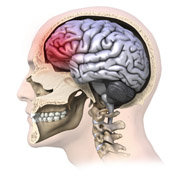Research and Innovation, UNL Office of

Center for Brain, Biology, and Behavior: Faculty Publications
ORCID IDs
Document Type
Article
Date of this Version
1-12-2021
Citation
Hubbard NA, Turner MP, Sitek KR, et al. Resting cerebral oxygen metabolism exhibits archetypal network features. Hum Brain Mapp. 2021;42:1952–1968. https://doi.org/10.1002/hbm.25352
Abstract
Standard magnetic resonance imaging approaches offer high-resolution but indirect measures of neural activity, limiting understanding of the physiological processes associated with imaging findings. Here, we used calibrated functional magnetic resonance imaging during the resting state to recover low-frequency fluctuations of the cerebral metabolic rate of oxygen (CMRO2). We tested whether functional connections derived from these fluctuations exhibited organization properties similar to those established by previous standard functional and anatomical connectivity studies. Seventeen participants underwent 20 min of resting imaging during dual-echo, pseudocontinuous arterial spin labeling, and blood-oxygen-level dependent (BOLD) signal acquisition. Participants also underwent a 10 min normocapnic and hypercapnic procedure. Brain-wide, CMRO2 low-frequency fluctuations were subjected to graph-based and voxel-wise functional connectivity analyses. Results demonstrated that connections derived from resting CMRO2 fluctuations exhibited complex, small-world topological properties (i.e., high integration and segregation, cost efficiency) consistent with those observed in previous studies using functional and anatomical connectivity approaches. Voxel-wise CMRO2 connectivity also exhibited spatial patterns consistent with four targeted resting-state subnetworks: two association (i.e., frontoparietal and default mode) and two perceptual (i.e., auditory and occipital-visual). These are the first findings to support the use of calibration-derived CMRO2 low-frequency fluctuations for detecting brain-wide organizational properties typical of healthy participants. We discuss interpretations, advantages, and challenges in using calibration-derived oxygen metabolism signals for examining the intrinsic organization of the human brain.
Included in
Behavior and Behavior Mechanisms Commons, Nervous System Commons, Other Analytical, Diagnostic and Therapeutic Techniques and Equipment Commons, Other Neuroscience and Neurobiology Commons, Other Psychiatry and Psychology Commons, Rehabilitation and Therapy Commons, Sports Sciences Commons


Comments
OPEN ACCESS